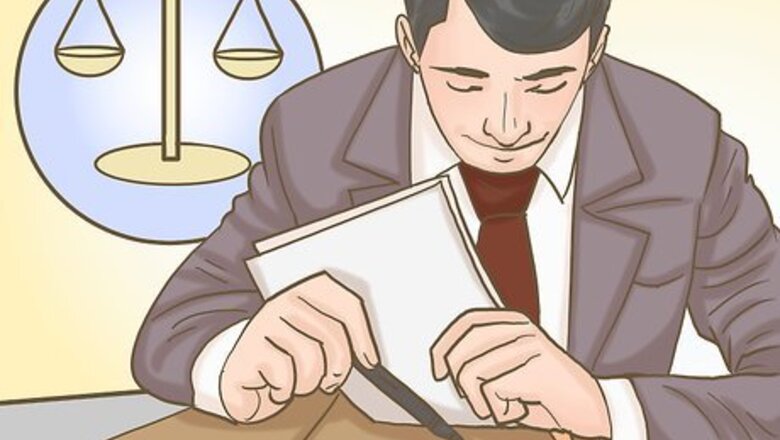
views
X
Research source
Organizing Exhibits
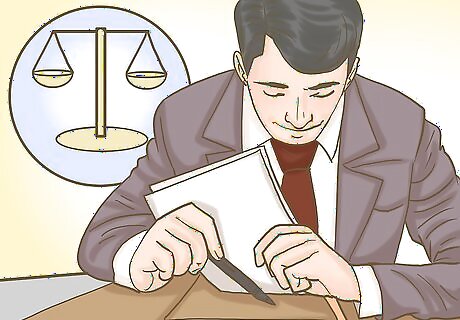
Sort through your documents and other evidence. Not every document you have that is related to your case will necessarily be useful as an exhibit at trial. Some documents may not even be admissible under the court's rules of procedure. Read through the rules of evidence carefully and think about how you will establish the authenticity of each document. If you need to call a witness to establish this, make sure the witness is included on your witness list and have the court issue a subpoena if necessary.

Select exhibits you want to use at trial. Choose exhibits that are relevant to the arguments you plan to make at trial, and that will help prove the point you're trying to make. Avoid redundant exhibits – only choose documents that are necessary. For example, if you're suing over a car accident, you may have multiple photos of your car. Even though they all may be admissible, you only want the photos that most clearly show the damage to your car. Don't include multiple photos from the same angle, or any photos that are blurry or otherwise difficult to make out.
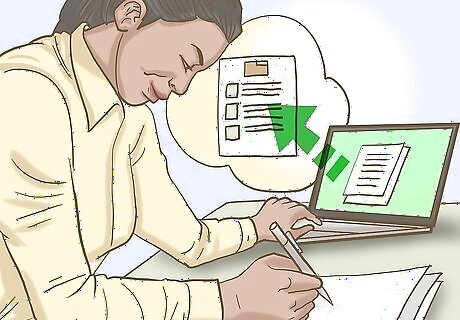
Create your exhibit list. Most courts have a form you must use to list the exhibits you plan to introduce at trial. Some courts also have separate witness lists, while in many the form is a combined exhibit and witness list. The clerk of court can give you a copy of the form the court uses. You may also be able to download the form on the court's website.
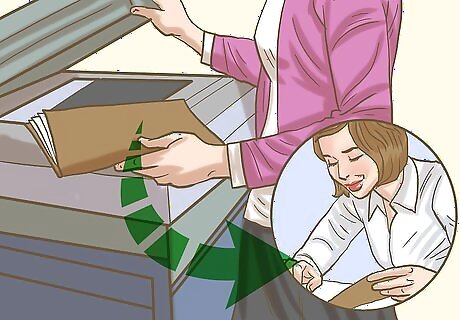
Make copies and sticker your exhibits. Typically, the court requires you to make copies of each exhibit you want to have admitted into evidence, and place a specific sticker on each page that identifies the exhibit with a particular number or letter. Some courts require different colored stickers for the plaintiff and the defendant in each case. Check with the court clerk to find out what kind of stickers you need. The clerk should also be able to tell you where you can buy the stickers you need. You may be able to find them at an office supply store. If you're e-filing your exhibits, you'll go through a different process of physically marking each exhibit. The court will have specific instructions on how to proceed. Typically you'll include a blank page that labels and numbers each exhibit.
Filing Exhibits
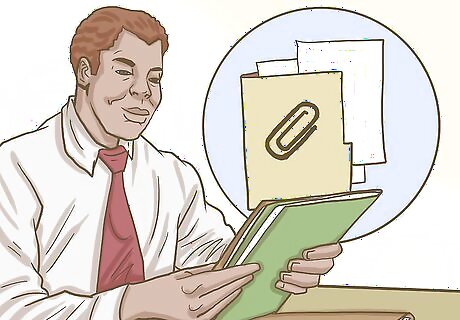
Attach your exhibits to your court documents. If you're filing exhibits in conjunction with a complaint, answer, motion, or other court document, you typically file everything together in one package. Some types of lawsuits require specific exhibits to be filed along with the court documents. If the exhibits aren't included, your lawsuit may be dismissed. For example, if you're filing a divorce petition, you may be required to attach schedules or worksheets for child support and property division.
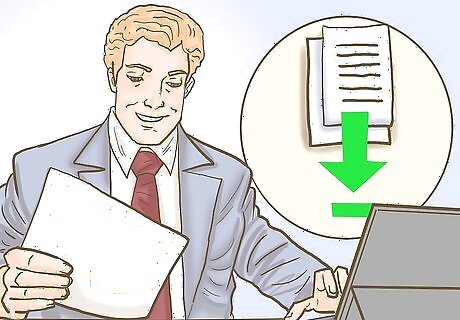
E-file your exhibits if allowed. Many courts allow you to file your exhibits electronically along with your complaint or motion. If this option is available to you, it can save you a lot of time and money making copies. Even if you file your exhibits, you typically still need to bring physical copies of your exhibits to court so the judge can consider them.
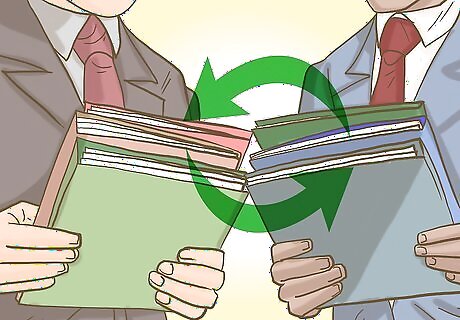
Exchange exhibits with the other side. After both parties in a case have filed exhibits, the judge will schedule a time for them to be exchanged. You can look at the exhibits the other side plans to use at trial and consider any objections you might have to their admission. The deadline for exchanging exhibits typically will be listed in your pre-trial order. For smaller cases, you may simply exchange exhibits a few hours before the trial. Analyze the other side's exhibits carefully, with a copy of the court's rules of evidence by your side. Think about all the reasons the exhibit might be inadmissible. For example, if the other side wants to admit an email, you could object on the basis that it was hearsay.
Getting Exhibits Admitted in Court
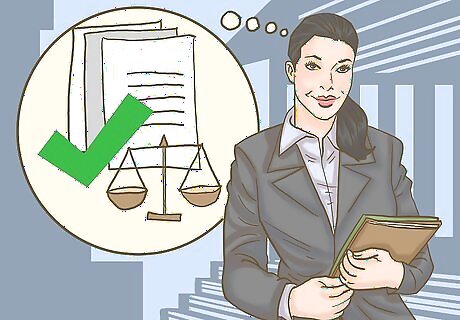
Bring physical copies of your exhibits to court. Even if you've e-filed your exhibits, bring at least 3 copies of each exhibit to court with you so it can be considered during trial. If you have a jury trial, you may need more than 3 copies. The clerk of court can tell you exactly how many copies you'll need on the day of trial. You can also find this same information in your court's local rules.

Authenticate documents or photographs. Before you can admit a document, photograph, or other exhibit into evidence, you must show to the judge that it is what you claim it is, and that it hasn't been altered in any way. Review the court's rules of evidence so you know how to authenticate the exhibit. The rules may differ depending on the type of document it is.

Present exhibits to witnesses. Another way to lay the foundation for an exhibit's admission is to have a witness state on the stand that the document is known to them and that it is what you claim it is. Ask the judge if you can approach the witness. Give them a copy of the document and ask them questions about it to establish that they can identify it. For example, if you are suing a general contractor for not completing a home renovation, you may want to admit your receipt to show that you paid the contractor. You could call the contractor as a witness to lay the foundation that the receipt is legitimate and was issued by them after receipt of your payment.
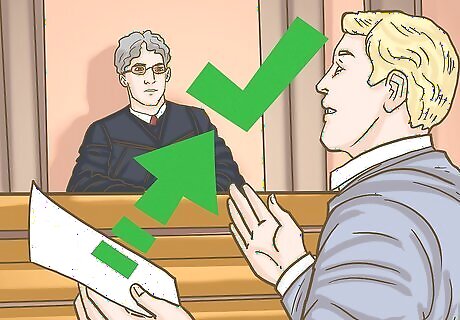
Ask the judge to admit the evidence. Once you've laid the foundation, present a physical copy of the evidence and say "I move that Plaintiff's Exhibit A be admitted into evidence" (or whichever letter or number it is). If the judge agrees, you'll hand a copy to the bailiff to give to the judge. If the judge refuses to admit the document, it will not be considered by either judge or jury when deciding your case. If you believe the judge is in error, you may have the opportunity to appeal the judge's decision not to admit your evidence. Make a note on your copies or on your outline of which exhibits are admitted and which aren't.
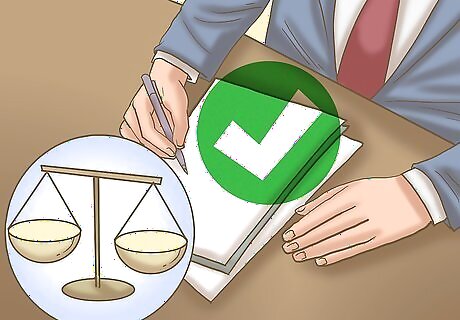
Have your exhibit marked. In some courts, you'll mark exhibits yourself before you enter the courtroom. In other courts, you'll have the clerk or another court officer mark the exhibits in the order you introduce them into evidence. If you labeled your exhibits before trial, you may find that the exhibit numbers or letters you originally used differ from those used at trial. Mark your exhibit list so you can keep them straight after the fact.




















Comments
0 comment